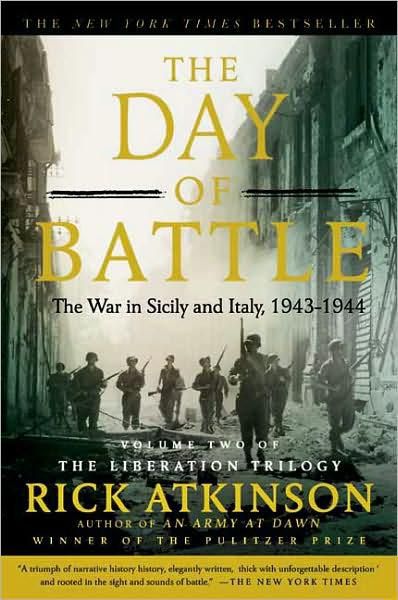The Day of Battle - The War in Sicily and Italy l 2.50 MB
History
The liberation of Europe marches on in the second volume of Atkinson's sterling Liberation Trilogy-though readers may sometimes wonder how the Allies ever won. After the German defeat in North Africa, writes Atkinson (In the Company of Soldiers: A Chronicle of Combat in Iraq, 2004, etc.), the U.S. military and political leadership pressed to take the war to northwestern Europe. FDR pointedly said that he shrank from "the thought of putting large armies in Italy," a country that was historically hard to attack and historically easy to defend. American commander George Marshall added that invading Italy would open a prolonged battle in the Mediterranean that would tie down men and equipment needed elsewhere; he proposed an air offensive instead. Yet the British were successful in arguing for an Italian front and "making the elimination of Italy from the Axis partnership an immediate goal," even if the Americans did pledge not to reinforce the front and extracted a due-by date from the British for the invasion of France. How the British succeeded is a tale in itself, one that Atkinson relates with due suspense. How the Anglo-American rivalry played out in the field will be familiar to anyone who knows the film Patton, but Atkinson rounds the story out with a close look at the field tactics of Lucian Truscott's infantry, who "covered thirty miles or more a day in blistering heat," and of George Patton's armor. The costs of advancing through "Jerryland" were appalling, and they forced changes in the order of battle-speeding racial integration in the American military, for instance-while occasioning unheard-of rates of desertion and dereliction: Atkinson observes that the U.S. Army "would convict 21,000 deserters during World War II, many of them in the Mediterranean." Yet, despite rivalry, a fierce German resistance and other obstacles, the Allies eventually prevailed in Italy-even if the Italians, one soldier recalled, kept asking, "Why did it take you so long?" Literate, lucid, fast-paced history-an excellent survey of the Mediterranean campaign.
Publishers Weekly
Atkinson surpasses his Pulitzer-winning An Army at Dawnin this empathetic, perceptive analysis of the second stage in the U.S. Army's grassroots development from well-intentioned amateurs to the most formidable fighting force of World War II. The battles in Sicily and Italy developed the combat effectiveness and the emotional hardness of a U.S. Army increasingly constrained to bear the brunt of the Western allies' war effort, he argues. Demanding terrain, harsh climate and a formidable opponent confirmed the lesson of North Africa: the only way home was through the Germans: kill or be killed. Atkinson is pitilessly accurate demonstrating the errors and misjudgments of senior officers, Field Marshal Sir Harold Alexander, Gen. Mark Clark and their subordinates commanding corps and divisions. The price was paid in blood by the men at the sharp end: British and French, Indians and North Africans-above all, Americans. All that remained of the crew of one burned-out tank were the fillings of their teeth, for one example. The Mediterranean campaign is frequently dismissed by soldiers and scholars as a distraction from the essential objective of invading northern Europe. Atkinson makes a convincing case that it played a decisive role in breaking German power, forcing the Wehrmacht onto a defensive it could never abandon.
Link :
Code:http://ul.to/eufxmob3
Please visit our sponsors
Results 1 to 1 of 1
-
05-01-2015, 08:40 PM #1Senior Investor

- Join Date
- Jan 2012
- Posts
- 7,166
- Feedback Score
- 0
- Thanks
- 0
- Thanked 6 Times in 6 Posts
 The Day of Battle - The War in Sicily and Italy
The Day of Battle - The War in Sicily and Italy
-
Sponsored Links
-
Sponsored Links
Thread Information
Users Browsing this Thread
There are currently 1 users browsing this thread. (0 members and 1 guests)
24 Hour Gold
Advertising
- Over 20.000 UNIQUE Daily!
- Get Maximum Exposure For Your Site!
- Get QUALITY Converting Traffic!
- Advertise Here Today!
Out Of Billions Of Website's Online.
Members Are Online From.
- Get Maximum Exposure For Your Site!
- Get QUALITY Converting Traffic!
- Advertise Here Today!
Out Of Billions Of Website's Online.
Members Are Online From.






 LinkBack URL
LinkBack URL About LinkBacks
About LinkBacks








